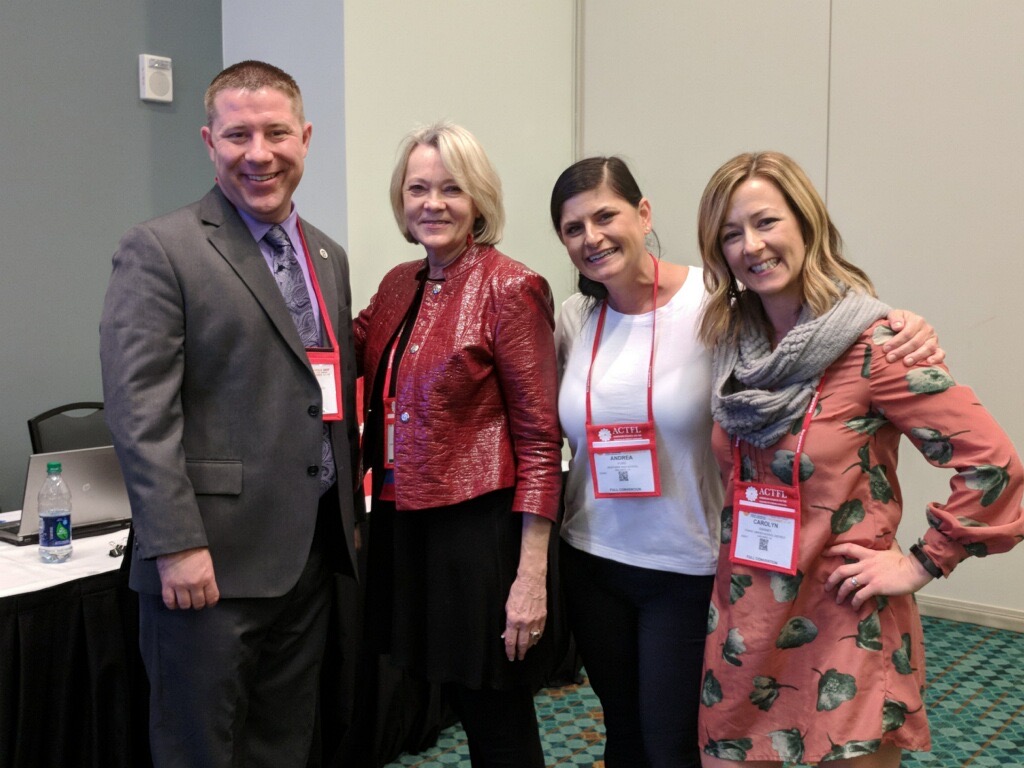Spanish teachers Ford, Swaney aid PUSD in foreign language curriculum changes
November 19, 2020

PUSD has brought changes to update the Spanish curriculum throughout the district, and now looks towards shifting the curriculum of other foreign language classes. With the aid of Westview teachers Andrea Ford and Carolyn Swaney, the district has introduced new teaching methods and materials to the Spanish curriculum at Westview, Mt. Carmel, Del Norte, and Rancho Bernardo.
“We worked with teachers in the district to adapt our materials and the new teaching methods to the classroom,” Ford said.
The district began considering curriculum changes as soon as the American Council on the Teaching of Foreign Languages (ACTFL) adopted new guidelines for foreign language curriculum in 2012. However, it would take four years of planning training and revising the curriculum for PUSD to begin to gather all foreign language teachers together and train them in these new standards. The district training began in 2016, and would last for about three years. The teacher instruction focused on proficiency-based learning, promoting discussion in the target language between students and teachers.
“We find that when we teach for communication, students are more able and confident in their ability to speak in the language,” Swaney said. Teaching for communication is a new type of learning, that is found to better aid students in language acquisition, allowing them to better demonstrate and acquire knowledge of the target language.
Between 2018 and 2019, the district sought materials and instructional strategies for Spanish programs, in order to better fit the new standards passed by ACTFL. However, PUSD Learning Support Services Director Beth Perisic said the district faced some difficulties when choosing materials.
“Most companies in charge of producing these materials were waiting for the California Department of Education to release its own standards,” Perisic said. The state department of education released its guidelines in January 2019, making the district wait to carry out their plans for foreign language courses.
Ford and Swaney had been teaching in accordance with the national (ACTFL) standards since 2015. Ford explained that the national guidelines were nearly identical to the ones issued by the state, and did not require a change in teaching. But when they began adhering to the new national guidelines, they realized how difficult such a transition was.
“We were a mess,” Swaney said. “It was so hard to adapt [to the new guidelines].”
Swaney and Ford found that relevant and effective materials that met the new standards were incredibly difficult to find. They struggled to introduce materials into their various classes, and set out to create their own. The teachers used trial and error to find materials that proved effective, and began to introduce them to their classes.
Using these created materials, the two teachers decided to go into business together, founding MesaMina in 2017. Their company sells their materials for schools to use when reshaping their Spanish programs, as well as offering consulting services. The pair didn’t want to have schools and teachers grapple with the transition, so they created their own units and materials.
“We didn’t want anybody to struggle like we did,” Swaney said.
Over the span of a few years, Swaney and Ford increased the amount of class time spent talking in the target language, as well as the use of their company’s materials into the Spanish classes at Westview. Their business was becoming more widespread, with 11 schools and districts hiring the teachers as consultants or using their materials. They had even begun to attend national conferences to present the new method of instruction they had begun to institute, as well as the materials they use.
However, the worldwide Covid-19 pandemic slowed things down, and the company was forced to integrate their lessons into the online environment. During this pandemic, PUSD hired Swaney and Ford as consultants. They worked closely with Director Perisic and the Learning Support Services team to help further ease the transition to the new curriculum, as well as provide suggestions for what the new curriculum should include. Del Norte began to use MesaMina’s materials, and Rancho Bernardo integrated materials from Pearson into their classes. Poway High is working towards changing its curriculum, but hasn’t yet selected a specific company’s materials. As for middle schools, many are still undecided.
After revising the Spanish programs, the district is turning to the other foreign language classes offered.
“We started with Spanish because it has the most students enrolled in it across the district,” Perisic said.
French recently became the next language targeted for new materials. Westview and Rancho Bernardo have opted for new materials during the 2020-2021 school year.
Though these new materials ease the transition to new standards, the standards themselves are based around the change in teaching methods. The district’s professional learning taught teachers new methods, but they still needed help integrating these methods into their classes.
It is here that Swaney and Ford provided the most aid, playing an instrumental role in helping schools and teachers adapt to new teaching procedures. They worked closely with teachers, helping to problem solve and help teachers incorporate the methods into their teaching.
“They helped the district change instructional methods and ease the transition across the different levels of Spanish,” Perisic said.
Swaney and Ford’s consulting has allowed other teachers to smoothly integrate the state standards and new teaching strategies into their current materials, though new materials for these classes are still undecided and untested.
Perisic said materials are coming to foreign language programs across all the schools in the coming years, but the first step was ensuring teachers are able to integrate new instructional methods into their classes.
“We don’t need the same materials for every foreign language class, but we want to keep similar high standards for all the languages that the district offers,” she said.


